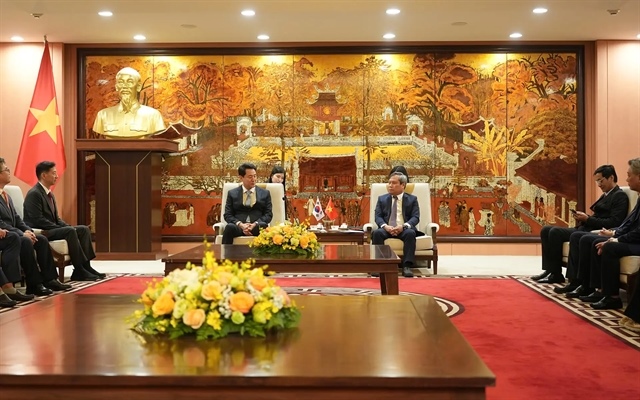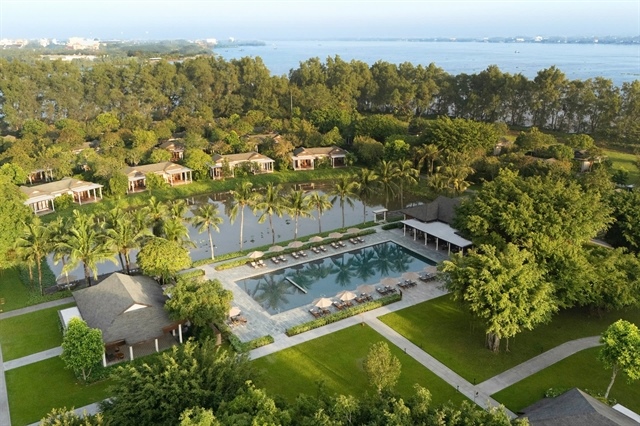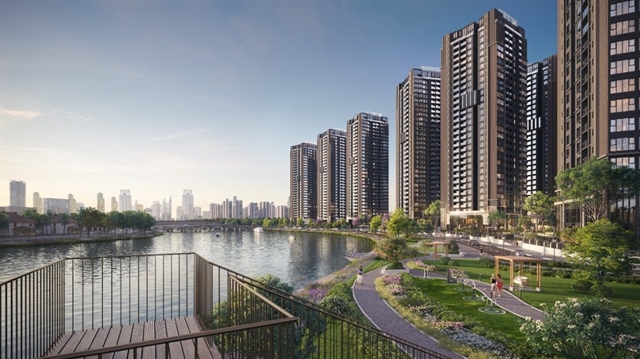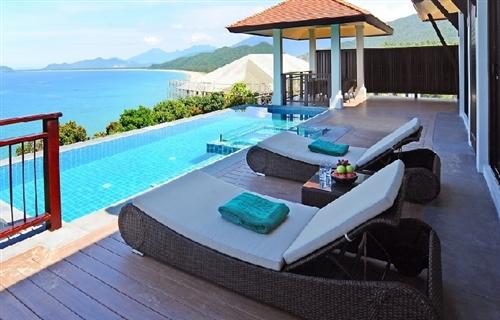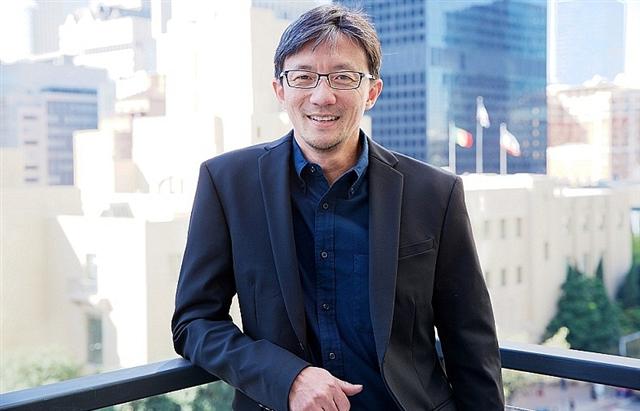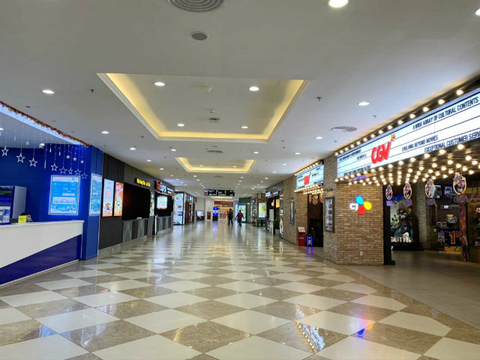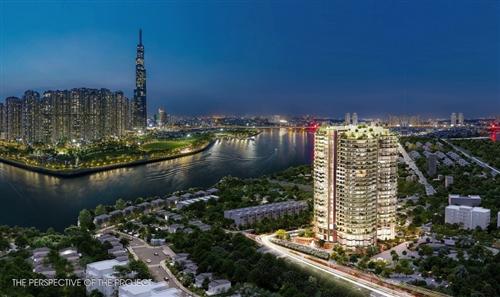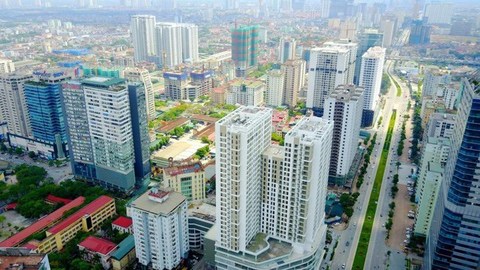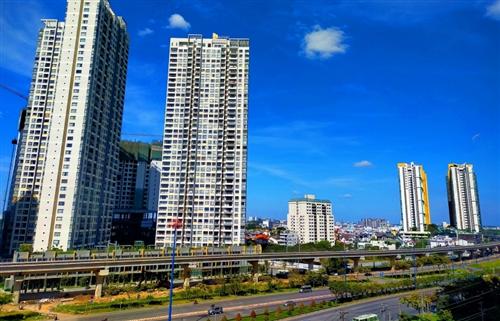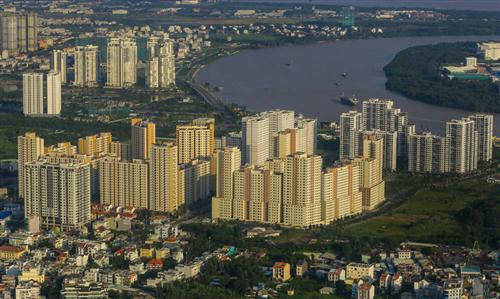Ha Noi condominium market sputters: CBRE
Ha Noi condominium market sputters: CBRE
Ha Noi's property market in the first quarter this year saw a low level of new launch supply in the condominium segment due to COVID-19 outbreak, according to real estate investment group CBRE Vietnam. 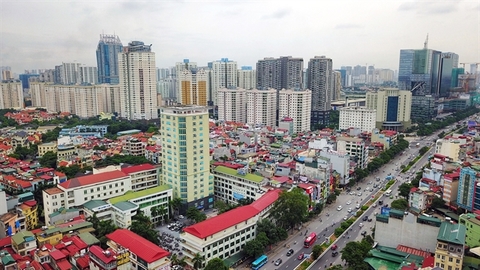
New launch supply in the quarter was limited at about 1,600 units, down 86 per cent year-on-year. The new launches mostly came from follow-on launches and were mainly located in the western and eastern regions of Ha Noi.
“This was the lowest new launch supply over the past nine years,” Do Van Anh, CBRE Vietnam manager, said at an online press conference releasing the quarterly report on Ha Noi’s real estate market in the first quarter held on Wednesday.
Eight projects offered products in the first quarter, she said, low compared with the quarterly average of 25-30 projects in 2017-19.
She also reported total sales of the Ha Noi condominium market in the first quarter were the lowest since 2013 at around 2,100 units sold during the first quarter.
Of which, sales of new launch supply in the quarter reached only 30-40 per cent, lower than the quarterly average of 40-45 per cent last year.
Sales activities have slowed across the segment as local buyers avoid coming to crowded sales events while travel bans restrict purchases from foreign buyers.
“The pandemic prevented foreign customers from coming to Ha Noi to conduct their transactions or to study the market so the housing market for foreign customers did not have significant development in the first quarter,” Van Anh told Viet Nam News.
Foreign buyers’ house trading activities in the quarter were mostly implemented before Tet (Lunar New Year) holiday, she said.
“In the future, foreign buyers will have high demand for apartments. Many investors from Hong Kong, Taiwan and South Korea are still interested in the Ha Noi housing market. The housing price in Ha Noi is competitive compared to other regional countries,” Van Anh said.
According to the report, the average selling price in the primary market in the first quarter this year was recorded at US$1,365 per sq.m, up by 4 per cent year-on-year.
There were several high-end projects in locations such as Tu Liem and Thanh Xuan districts that didn't launch on schedule, but the pricing of follow-on launches remained constant making the primary pricing level stable compared to the previous quarter.
Post-sales activity, especially property management, has become more important in recent years and is set to take on a new dimension following the COVID-19 pandemic. End-users and investors now expect higher standards of property management, with increasing demand for better sanitisation practices and attention to other hygiene-related issues, according to CBRE.
Looking forward, licensing issues, credit tightening and the COVID-19 pandemic are set to weigh on new condominium supply and demand in 2020.
“The state of the market will largely depend on how quickly the pandemic will end. Until then, the market’s resilience will be tested as developers, investors and end-buyers adopt the 'wait-and-see' approach,” said Nguyen Hoai An, Director of Hanoi Branch, CBRE Vietnam.
Assuming the pandemic ends by the end of the second quarter this year, Ha Noi is expected to see the addition of approximately 27,000-28,000 units in 2020, Van Anh said. In terms of location, the west remains the main focus, but the east (Gia Lam District, Ha Noi or Van Giang District, Hung Yen Province) will be the second main source of new supply in 2020.
Slow purchasing momentum in the first half this year may pull down the annual total of sold units to about 24,000 in Ha Noi from the previous projected level of 31,000 units.
In a worse scenario or if the pandemic is not contained before the end of the third quarter, new launch and sold units are expected to lower to about 14,000 units and 9,000 units respectively, equal to only 30-40 per cent of the level of new supply and demand in 2019, she said.
The selling price is forecast to reduce to about $1,300 per sq.m, down by 6 per cent year-on-year as high-end projects might delay their launches till 2021 and existing projects might offer more competitive pricing to attract buyers.




